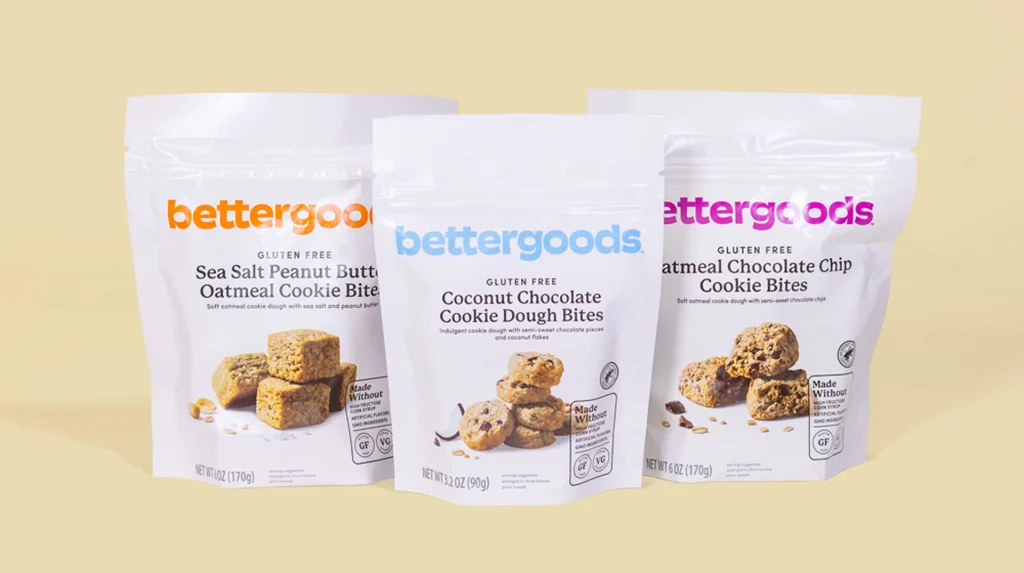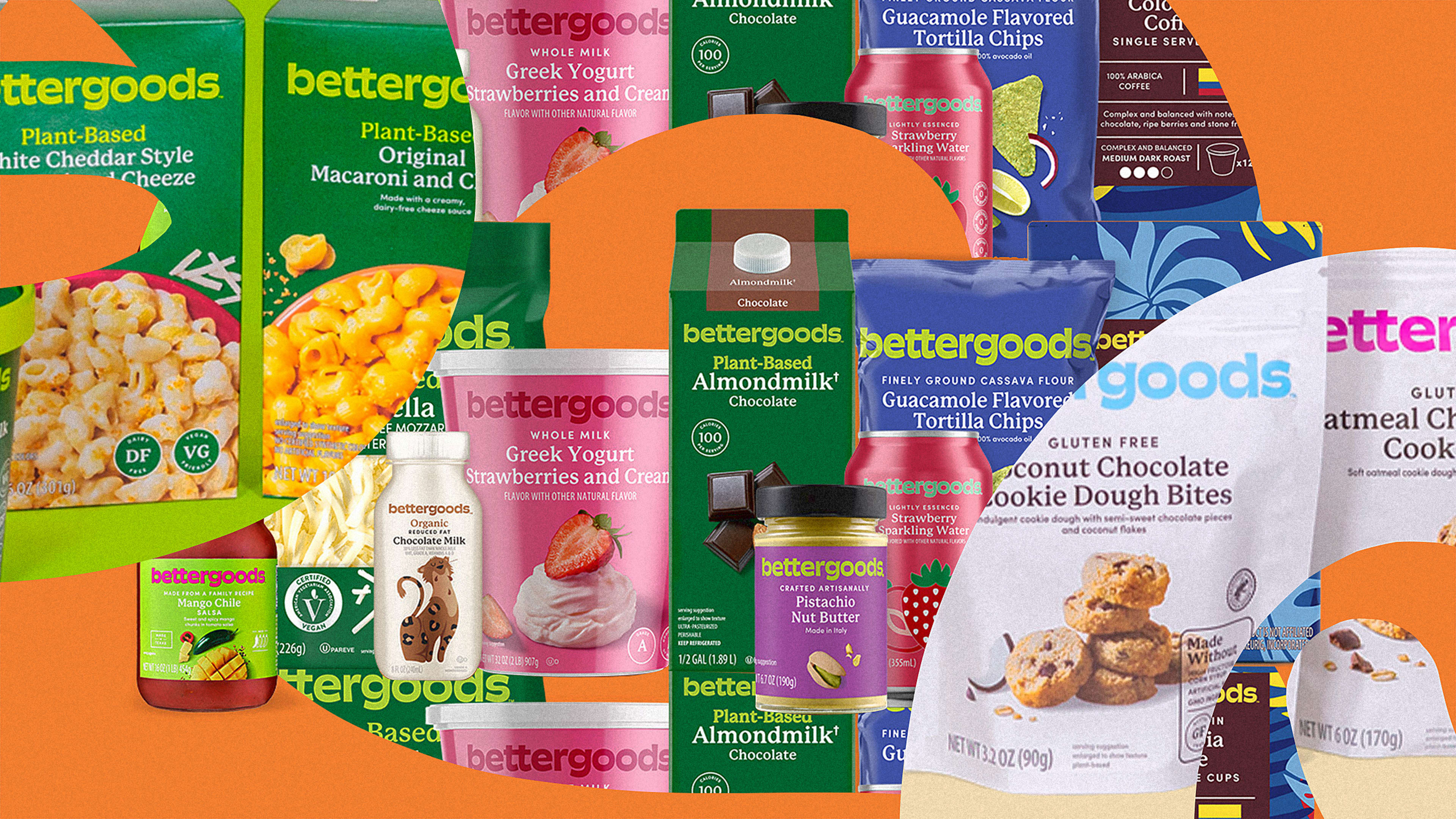Walmart’s new private label brand, Bettergoods, doesn’t look like what you might expect a Walmart private-label brand to look like. And that’s entirely the point.
The discount retailer is pitching the new brand to shoppers looking for “elevated culinary experiences,” according to the company. With a vivid and colorful new brand identity that has the looks, messaging, and product offerings of more premium competitors, the goal, says Walmart vice president of creative and design David Hartman, was to create a brand that’s “as desirable as the leading national brands.”
Dress for the job you want; brand for the customer you want to have.

Packaging can go a long way in influencing consumers’ perception of a product. One 2018 study by Pregis and the University of Wisconsin found that the difference between premium and economy packaging changed the retail price respondents expected to pay for a product by 45%. By making packaging look intentionally cheap, designers can communicate low price. But by designing packaging that looks premium (indicating high quality) and keeping the price low—a trick long used by Target—packaging can convey great value.
So, just how exactly does Walmart communicate that its brand is premium? Start with the name. “Bettergoods” inherently evokes comparison—and was intended to “convey the notion that these products are better tasting, better quality, and are made with ‘better for you’ ingredients,” says Hartman.

From a visual standpoint, Bettergoods styles its name as a single word in all lowercase letters and a custom typeface to look approachable and friendly, Hartman tells Fast Company. And unlike Walmart’s simple-designed Great Value brand, Walmart designed the Bettergoods packaging in a mix of colors for a more premium look that’s in line with CPG contemporaries.
Multicolor packaging also plays up its new premium product offerings, which typically also come with a higher price point, like plant-based shredded cheese, organic milk, and gluten-free chicken nuggets. Consider the plant-based products in green packaging, and the guacamole-flavored tortilla chips, now in an attractive color-on-color blue and lime green bag.
These are products you might expect to find in Target’s Good and Gather private label brand, or a DTC brand with retail partnerships. And that’s, of course, intentional. They’re aimed at younger or more affluent, trend-oriented consumers looking for vegan options and specialty ingredients with packaging to match.
“We wanted to make it easy for our customers to find better food alternatives,” Hartman says. “The bright, vibrant, color-on-color palette for the core assortment makes our brand easy to find, and is used to express the vibrancy of the food and the joy of eating,” he says.

Hartman describes the packaging photography as “artful” and “designed to elevate the product and hero the quality of our premium ingredients.” He adds that typography is “designed to cue the quality of the ingredients and the care we took in the development of the products.” (JKR’s Lisa Smith cited a similar rationale behind the visual approach of her team’s 2021 Burger King rebrand.) In the age of the shelfie, Walmart’s aiming for newfound shelf appeal that will be familiar to consumers who have purchased more trend-oriented DTC products with expressive visual brands.
For Walmart, the Bettergoods private label brand is still priced affordably, with products retailing for less than $15 and most available for less than $5, according to the company. But the line is aimed at attracting and retaining consumers who started spending more of their dollars at the discount retailer as inflation soared.
“Sam Walton said, ‘If you don’t listen to your customers, someone else will,’”Hartman says. “Every brand in our portfolio plays an important role in the lives of our customers. We created Bettergoods based on a need we heard from customers for a well-designed, trend-forward, and affordable food offering that emphasized their love of food.”
Walmart CFO John David Rainey said on the company’s quarterly earnings calls in February that shoppers who earned more than $100,000 a year were “one of the biggest contributors in the quarter.”
Recognize your brand’s excellence by applying to this year’s Brands That Matter Awards before the final deadline, June 7.
Sign up for Brands That Matter notifications here.
